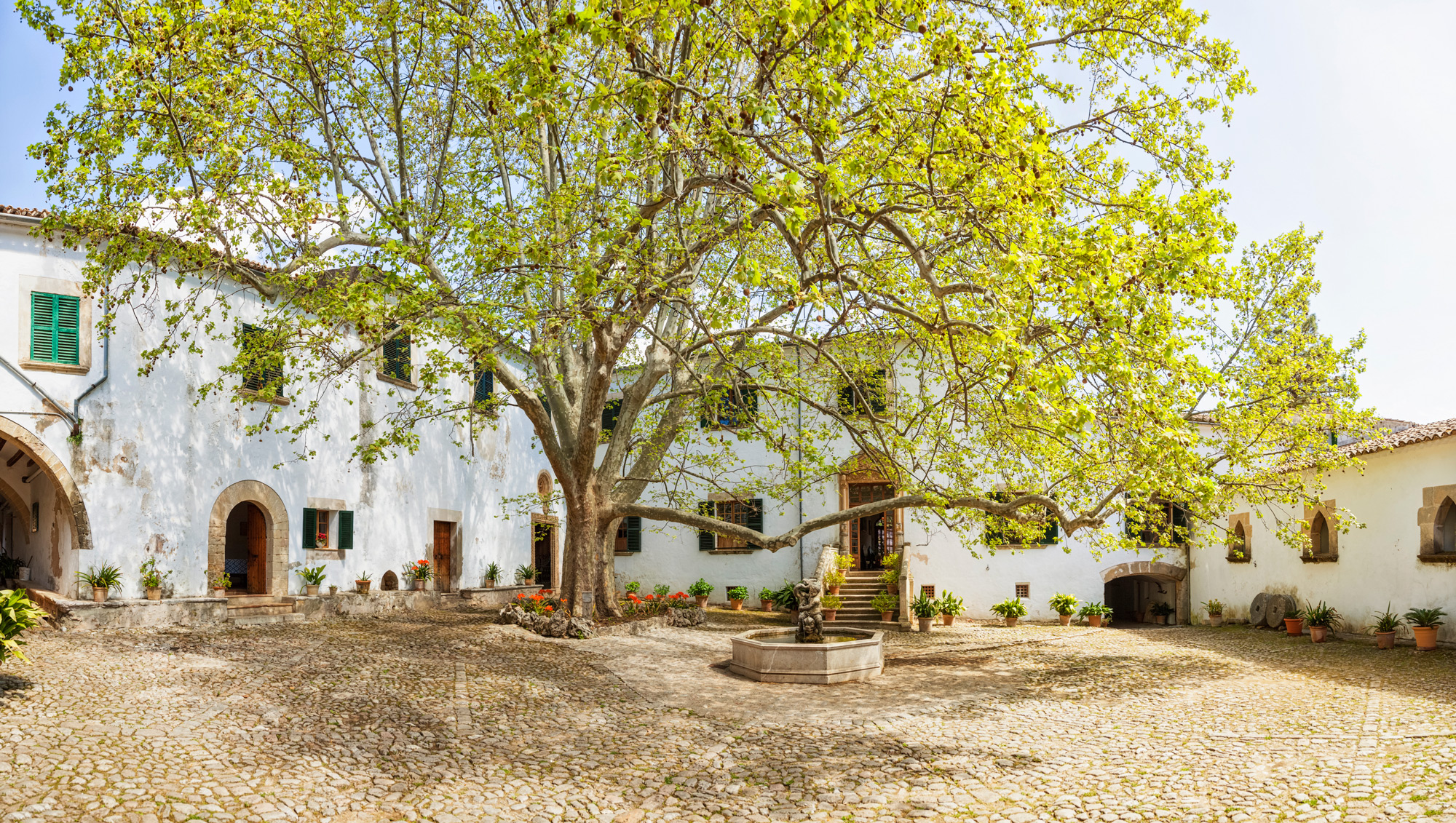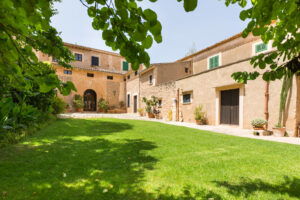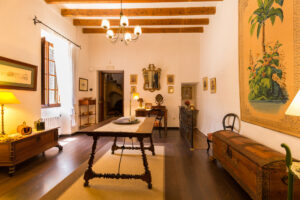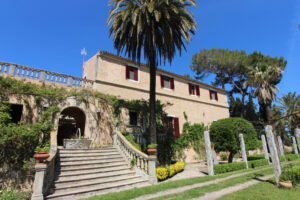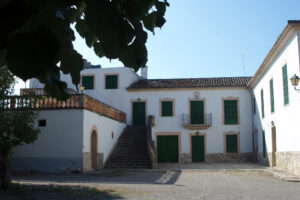Mallorca’s countryside stately homes: les possessions
Mallorca boasts a truly exceptional historical and cultural treasure: les possessions.
When James I the Conqueror first reached the shores of Mallorca in 1229, he discovered an extremely prosperous country: the Moorish lords had made significant improvements to the irrigation systems installed by the Romans, created terraced farm land and built windmills. They had also planted large expanses of land with citrus and almond trees and tended vineyards. Their country homes, known as alquería, or rafal (the Spanish translation from the Arabic terms al-Qari and rahal), were located mainly inland, which not only enabled them to work the land, but also provided better protection from attacks by pirates and corsairs. It is for this reason that some of these homes featured watchtowers. Following the conquest, when Mallorca came under the domains of the Kingdom of Aragón, the lands were distributed between the Crown and its allies during the struggle: nobles, landowners, financiers, merchants and the Church all received large amounts of land.
The original Moorish country homes were taken over by the new lords who over the years extended and added to them. It is precisely for this reason that these historic country homes feature myriad architectural styles from various periods. It was in the 16th century that the Mallorcan term possessió became widely used. These stately homes had formed part of the island’s country life since the Middle Ages and were essentially large farming estates. Activity was based mainly on the large-scale cultivation of cereals, olives and vines. The produce was sold at local markets and in the capital, and some was even exported. Sheep, goats and pigs were also bred, albeit on a smaller scale.
The heart of these countryside stately homes was made up of several buildings known as les cases, which stood around a large courtyard, la clastra. They included a manor house featuring monumental architecture (la casa del senyor), the tenant’s house (la casa de l’amo) or, in those cases where the lord of the manor wished to administer his estates personally, the overseer’s house (la casa del majoral). The clastra was central to social life on the estate, acting as a kind of meeting point for sharing and exchanging ideas. It was also there that the almonds were peeled, water was collected from the tank and the latest happenings and events were discussed. The farm labourers lived in a separate building. Depending on the type of estate, there would also be an oil mill (la tafona), or a wine cellar (el celler), as well as a barn and stables. Some of these countryside stately homes even had their own chapel, and others delightful gardens such as the Jardines de Alfabia in Bunyola. Each house had a drive, which was often tree-lined, leading to a majestic gate. The main entrance and gate were normally decorated with coats-of-arms.
In 1784, the priest Antonio Despuig y Dameto drew up a map for the Princess of Asturias, Marie Louise of Bourbon that included some 1,250 possessions.
Throughout the 17th and 18th centuries, building country houses as summer residences became common practice on Mallorca. People were eager to get out of the city and enjoy the fresh country air. The more affluent families often owned several properties. These country estates or houses were smaller than the stately homes and were surrounded by less land. However, they form an essential part of Mallorca’s inland landscapes. The walls of these houses were covered with ivy or bougainvillea that decorated the façades.
Frédéric Chopin, George Sand and Archduke Ludwig Salvator
With Mallorca’s economic and social transformation, reflected in the shift from agricultural activity to tourism during the 20th century, the concept of the possessió and large farming estates gradually lost ground. The first ferry service between Barcelona and Palma in 1835 connected mainland Spain and Mallorca by steamship, turning it into a popular destination amongst the nobility, wealthy upper middle classes and the art world. Frédéric Chopin and George Sand spent the winter of 1838-39 on Mallorca, causing an authentic sensation and curiosity, and the news spread like wildfire amongst the upper echelons of society.
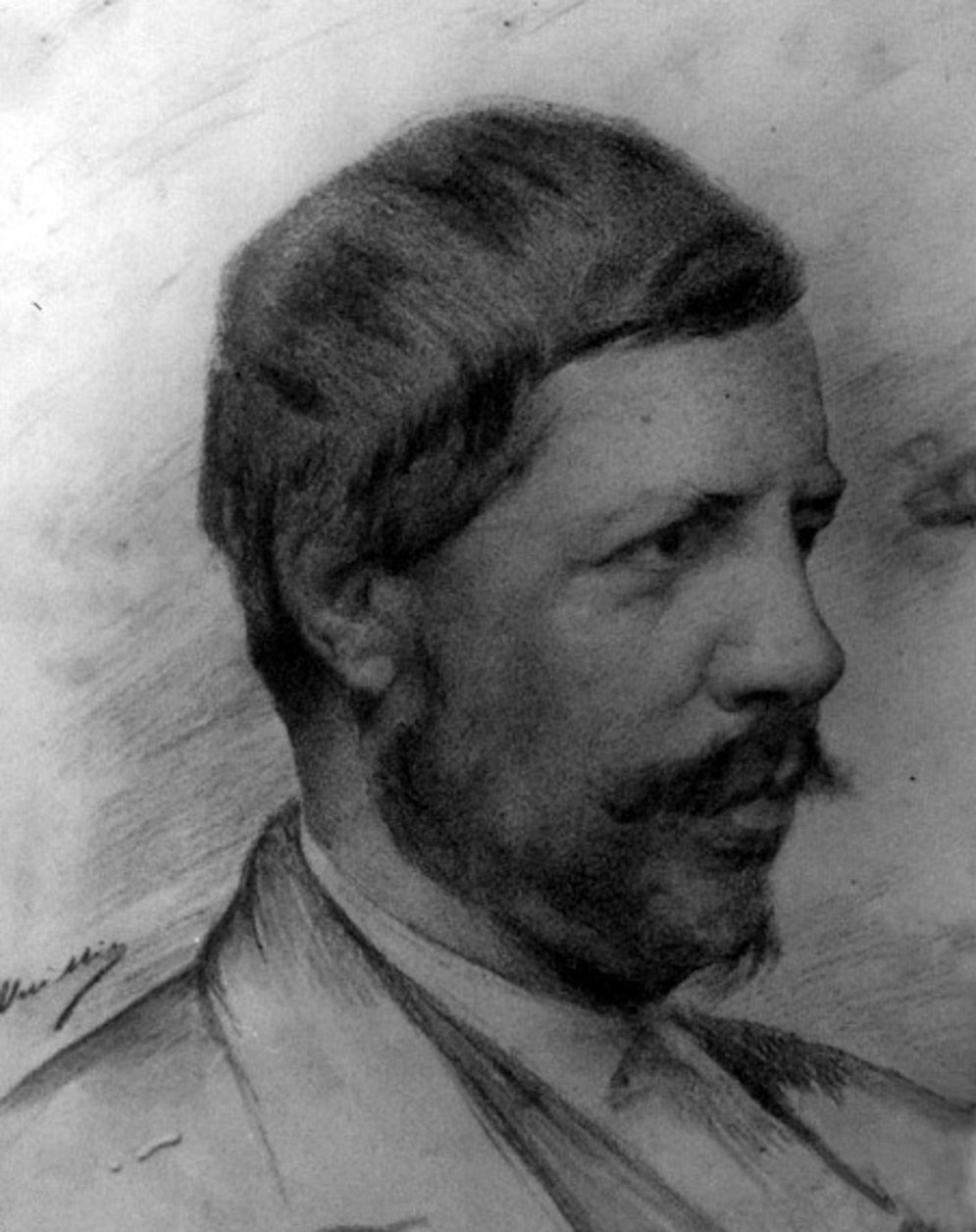
The young Archduke Ludwig Salvator of Austria-Tuscany, a member of the House of Hapsburg-Lorraine and a talented naturalist as well as one of the island’s benefactors, was just 19 when he first visited Mallorca in 1867, and was immediately entranced by the beauty of the island and the sea. He made plans to return at the earliest opportunity and settle on the Valldemossa coast. From there, he toured the countries of the Mediterranean on his sailing boat Nixe and wrote a large number of books.
Ludwig Salvator built the magnificent S’Estaca villa, perched on the clifftops, and purchased a number of well-known countryside stately homes including Son Miramar, Son Marroig and Son Moragues. He led an unconventional life, growing muscat and Malvasia grapes and created a wild flora and fauna park, as well as numerous lookouts. Empress Elisabeth I of Austria, better-known as “Sissi” thanks to the films starring Romy Schneider and written and directed by Ernst Marischka, enjoyed visiting Ludwig Salvator, as did many artists, naturalists, writers and many other freethinkers. At his retreat in Miramar, known as Ca Madò Pilla or Ca na Magina, the Archduke would welcome any foreigner that shared his love for the island. On his estates nestling between Valldemossa and Deià he forbade the felling of trees and any harm to animals. S’Estaca, which today belongs to the film star Michael Douglas, was managed and run by Catalina Homar, friend and confident of Ludwig Salvator.
Archduke Ludwig Salvator, an honorary citizen of Mallorca, is part of the island’s history.
Countryside stately homes today
Many of the countryside stately homes remain in the hands of their original owners and their families. Others have been turned into agrotourism properties, country hotels or museums, such as the Son Marroig stately home. Some have fallen into disrepair or even disappeared. However, many magnificent country hotels such as Sa Torre in Santa Eugenia, Gran Hotel Son Net y Finca Hotel Son Pont in Puigpunyent, have managed to conserve the true character of these historic stately homes dotted around the countryside.
Author: Beate Vianden, 23 March 2021, Palma de Mallorca
Did you like the article? You can request the item from us by sending a message to info@mallorcafincavianden.com.
The following countryside stately homes are currently on sale at MALLORCA FINCA VIANDEN:


